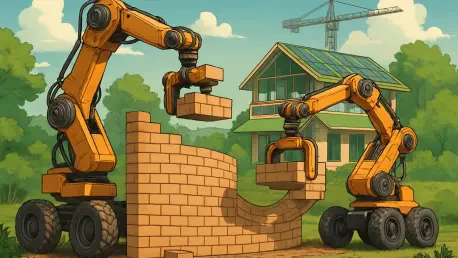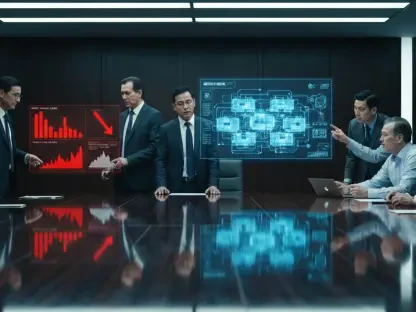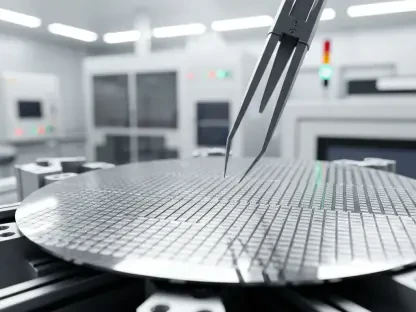Imagine a construction site where every brick is placed with pinpoint accuracy to maximize energy efficiency, tailored to the exact environmental conditions of the location. This scenario is no longer a distant vision but a tangible reality as the construction industry grapples with the urgent need to address climate challenges. Today, the sector stands at a crossroads, balancing traditional methods with cutting-edge technologies like robotics to create structures that are both sustainable and resilient. The integration of climate-optimized building practices—designing structures to adapt to local weather patterns and reduce energy consumption—has become a priority amid growing environmental concerns.
The significance of sustainable construction cannot be overstated, as it plays a critical role in reducing carbon footprints and conserving resources. Key players, such as academic institutions like the Technical University of Munich and industry collaborators like the Munich-Ebersberg Construction Guild, are leading the charge by pioneering projects that merge digital innovation with hands-on expertise. Their efforts highlight how technology can enhance rather than replace human skills, focusing on creating buildings that are eco-friendly and durable through precise design and execution.
This blend of traditional craftsmanship with digital tools and robotic assistance offers a promising path forward. Robotics can achieve levels of precision in tasks like brick placement that are challenging for human workers alone, while digital configurators allow for customized designs that optimize climate performance. Together, these advancements aim to redefine construction practices, ensuring that sustainability and efficiency are at the forefront of every project.
Current Trends and Innovations in Robotic Construction
Emerging Technologies and Sustainable Practices
The construction industry is witnessing a surge in innovative technologies that prioritize sustainability, with digital design configurators emerging as a game-changer for climate-optimized structures. These tools calculate the ideal positioning of materials, such as bricks, to enhance energy efficiency based on factors like sun exposure and wind patterns. Meanwhile, robots are being deployed for tasks requiring high precision, such as laying bricks at specific angles, ensuring that designs are executed flawlessly on-site.
Human-robot collaboration is reshaping the way construction projects are approached, with an emphasis on sustainable outcomes. Robots act as supportive tools, assisting workers in achieving accuracy while maintaining the value of manual skills. This synergy also promotes monomaterial designs—using single, recyclable materials like bricks—to simplify building processes and boost energy efficiency, aligning with broader goals of reducing environmental impact.
Market drivers are fueling this shift, including a rising demand for eco-friendly construction methods and the need to address persistent labor shortages. Technology offers a solution by automating repetitive tasks, allowing skilled workers to focus on complex aspects of projects. As these trends gain traction, opportunities arise to create a more sustainable and efficient industry through the strategic integration of robotics and digital tools.
Market Insights and Growth Potential
Data on the adoption of robotics in construction reveals a promising trajectory, with projections indicating significant growth in climate-optimized building technologies over the next few years, from 2025 to 2030. Industry reports suggest that the market for robotic construction solutions could expand substantially as pilot projects demonstrate success in enhancing building performance. Early adopters are already seeing measurable benefits that point to a scalable future for these innovations.
Performance indicators further underscore the value of robotic integration, with structures showing improved energy efficiency due to precise material placement and optimized designs. Additionally, sustainable practices facilitated by technology are reducing material waste, contributing to cost savings and environmental benefits. These outcomes highlight the potential for robotics to address both economic and ecological challenges in the sector.
Looking ahead, the scalability of robotic integration appears robust, driven by successful case studies and ongoing research. Pilot initiatives have shown that combining digital planning with robotic execution can streamline workflows and improve project outcomes. As more companies recognize these advantages, widespread adoption could transform construction into a more technologically advanced and sustainable field.
Challenges in Implementing Robotic Climate-Optimized Construction
The path to integrating robotics into climate-optimized construction is not without hurdles, with high initial costs posing a significant barrier. Robotic systems and digital tools require substantial investment, which can be prohibitive for smaller firms or those unfamiliar with the technology. This financial challenge often delays adoption, even as the long-term benefits of efficiency and sustainability become evident.
Technological and operational obstacles also persist, particularly in ensuring that robots can function effectively in the dynamic, often unpredictable environments of construction sites. Adapting to real-time changes and maintaining safety during human-robot interactions remain complex issues. Furthermore, regulatory hurdles related to safety standards and compliance can slow progress, as authorities work to establish guidelines for these emerging technologies.
Solutions to these challenges are emerging through targeted strategies, such as comprehensive training programs to help workers adapt to new tools and systems. Partnerships between academia and industry are also proving vital, fostering innovation and driving down costs through collaborative research. By addressing these barriers head-on, the industry can pave the way for broader acceptance and implementation of robotic solutions in sustainable construction.
Regulatory Landscape and Compliance in Robotic Construction
Navigating the regulatory framework for robotic construction is essential to ensure safe and effective integration of technology. Standards governing human-robot collaboration focus on minimizing risks, requiring robust safety protocols to protect workers on-site. Additionally, environmental regulations mandate the use of sustainable building materials, aligning with the goals of climate-optimized construction.
Compliance with labor laws is another critical consideration, as technology must complement rather than displace human workers. Regulations aim to strike a balance, ensuring that automation enhances productivity without undermining job security. This aspect is particularly relevant as the industry seeks to attract younger talent who value tech-driven approaches but also expect stable career paths.
Evolving standards are shaping industry practices by promoting greener methods and prioritizing worker safety. As policies adapt to technological advancements, they encourage the adoption of eco-friendly designs and materials while setting clear guidelines for robotic operations. Staying abreast of these changes is crucial for companies aiming to remain competitive and compliant in a rapidly transforming sector.
The Future of Climate-Optimized Construction with Robotics
The trajectory of climate-optimized construction suggests a future where advanced technologies like digital twins—virtual replicas of physical structures—play a central role in planning and execution. These tools, paired with more sophisticated robotic systems, could enable real-time adjustments and predictive maintenance, further enhancing efficiency. Such innovations promise to elevate the precision and adaptability of building processes.
Potential disruptors, such as the widespread adoption of automation or shifts in consumer demand for sustainable buildings, could significantly alter market dynamics. As clients increasingly prioritize environmental impact, companies that embrace robotic and digital solutions may gain a competitive edge. This shift could accelerate the transition to greener practices across the industry, reshaping how projects are conceptualized and delivered.
Global economic factors, policy changes, and continuous innovation will likely drive growth in this space. Supportive regulations and incentives for sustainable construction can amplify adoption rates, while younger generations entering the workforce bring a tech-savvy perspective that embraces digital craftsmanship. Together, these elements point to a vibrant future where robotics and sustainability are seamlessly integrated into construction norms.
Conclusion and Outlook for Robotic Construction
Reflecting on the insights gathered, it becomes clear that robots have significantly enhanced precision, sustainability, and efficiency in climate-optimized construction while preserving the essence of human skills. The journey showcases how technology acts as a partner, not a replacement, in addressing pressing environmental and labor challenges within the industry. These findings underscore the transformative potential of robotic integration when paired with strategic planning and collaboration.
Moving forward, actionable steps emerge as critical to sustaining this momentum. Increased investment in training programs is deemed essential to equip workers with the skills needed to operate alongside robotic systems. Additionally, fostering research partnerships between academic institutions and industry stakeholders stands out as a way to drive innovation and reduce costs. These efforts promise to ensure that the benefits of technology reach a wider audience.
Lastly, a broader consideration is the need to advocate for policies that support sustainable construction practices. Encouraging regulatory frameworks that incentivize eco-friendly designs and safe human-robot collaboration is seen as vital for long-term success. By focusing on these areas, the construction sector can build a foundation for continued growth, leveraging robotics to meet both current demands and future aspirations.









